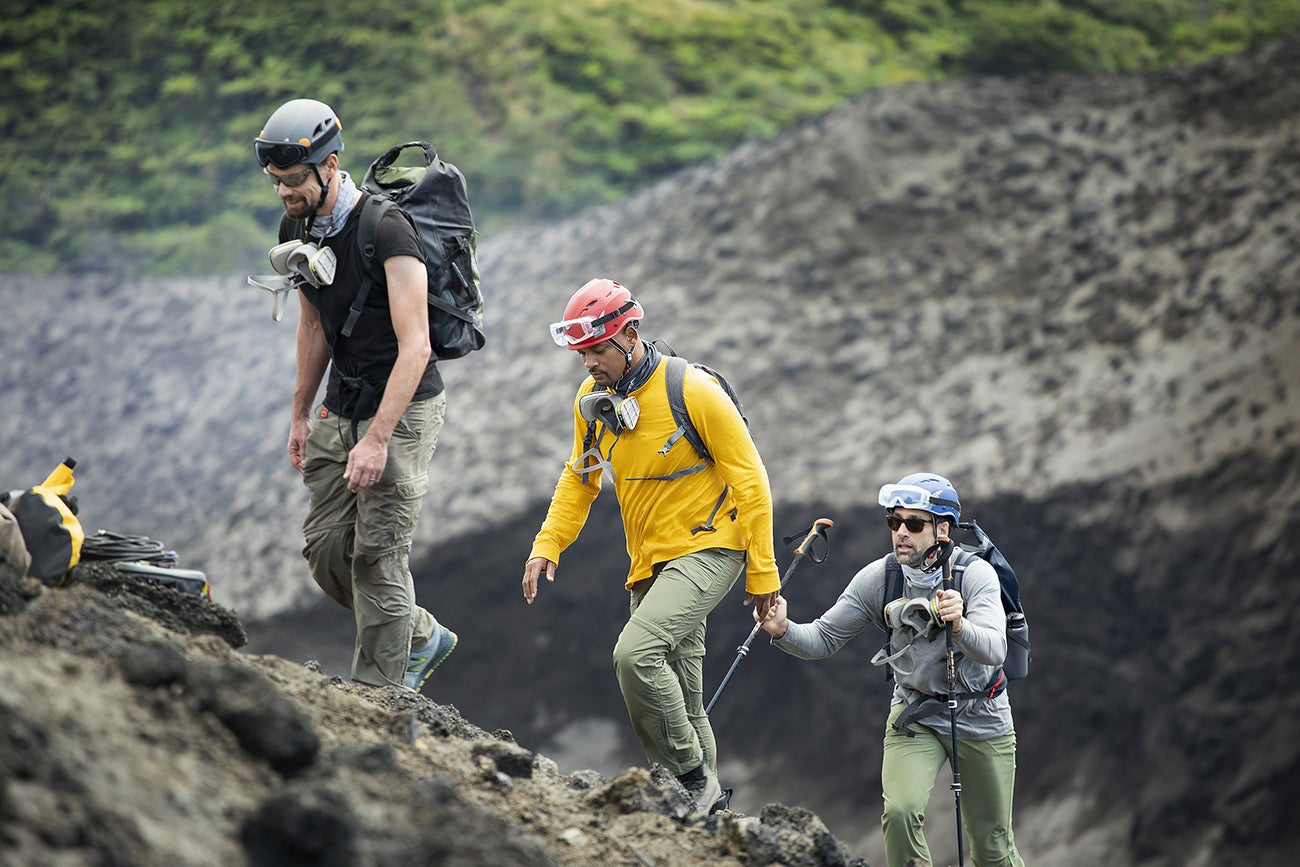
When Boise State University professor Jeffrey Johnson traveled to Yasur Volcano in 2019 he never imagined that it might result in a scientific research product. He had been invited by National Geographic to help explain volcano sounds to the public for the first episode of a documentary series called Welcome to Earth (released on Disney+ in Dec. 2021). Yasur, which is located in the Pacific Island nation of Vanuatu, was selected as a feature for the documentary series because it is active photogenic volcano with powerful explosions occurring regularly from the bottom its 300 meter deep twin craters. These explosions generate loud concussions and blast out volcanic bombs the size of refrigerators.
National Geographic invited Johnson because of his specialization in volcano sounds focused on the infrasound. Infrasound is low-frequency airwaves, below the threshold of human hearing, that volcanoes produce with great intensity. Infrasound can be well recorded with specialized infrasonic microphones built at Boise State. Johnson and his team collect and analyze these sounds to learn about eruption dynamics. At Yasur they were particularly interested in how the infrasound radiates away from vents during explosions and also how infrasound presents as resonant standing mode waves in the volcanic craters behaving a bit like giant organ pipes. Johnson’s expectation was to record and share with the television audience the inaudible sounds from a volcano.
What he didn’t expect was to record a unique dataset, where infrasound recordings coupled with coincident video-camera signal processing led to an important discovery – that cameras can be used to detect and monitor volcano sounds with remarkable fidelity. With critical help from volcanologists and local experts Thomas Boyer, Jackson Lackapas, and Philip Yamha Johnson was introduced to the volcano and the team deployed sensors and cameras for continuous monitoring.
They were able to analyze the data and test hypotheses related to how infrasound is able to condense and vaporize plumes so that they become visible to conventional cameras. Johnson and his team of authors, including Thomas Boyer from Vanuatu, Leighton Watson from New Zealand, and Jake Anderson from Boise State University, submitted their work for peer-review nearly three years after the data were collected.
This paper recently paper, “Volcano Opto-Acoustics: Mapping the Infrasound Wavefield at Yasur Volcano (Vanuatu)” argues in favor of the nascent field called ‘volcano opto-acoustics’, where cameras are used to remotely monitor activity from a volcano. The authors argue that applications extend beyond the esoteric, and that this method could potentially be used as a robust volcano monitoring technique. Johnson and his team now hope to apply lessons learned to other volcano case studies.